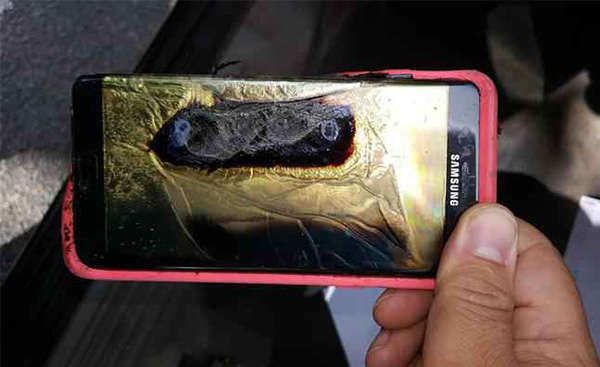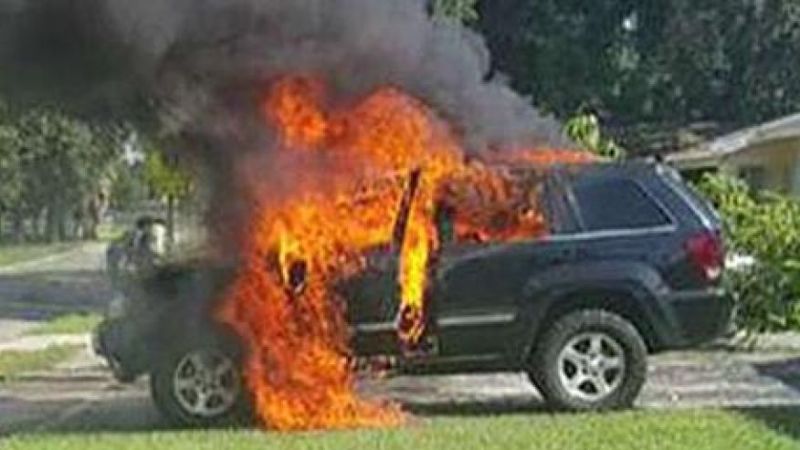Note 7: Why Keepers Are Fools
In another post on this topic, I discussed the human psychology that likely led to Samsung’s exploding battery problems. Here I will discuss another example of that psychological tendency in a related phenomenon – the Note 7 “keepers.”
As wild as it sounds, there are some people who have decided to keep their Note 7, in spite of the recall. Again, this gives us a great look into human psychology. What we see here is a case of:
- “I want this so how can I justify it?”

Philosopher William James once penned that Logic is what one wants to believe. Now this was part of a much longer discussion on the topic that qualified this, but this case shows it beautifully.
Perhaps the strongest proponent of this is that of Mashable contributor Josh Dickey. Here we see a great example of using pseudo-logic to justify a truly illogical choice because he wants to keep his Note 7.
In a post he argues:
can we take a math break for a second?
Because when you do that, owning this supposed ticking time bomb is still statistically less dangerous than the act of getting in your car…
—-
- Dickey counts 2.5 million phones sold and just under 100 incidents gives you a 1/25,000 chance of an issue.
- He then quotes statistics that in California there is a 1 in 12,778 chance of being killed in a car accident. AND
- 1/13,000 chance of being struck by lightening (if you live to 80)
Additionally, he bases his argument on this:
- “It’s also possible, and not knowable, that the phones that were going to explode mostly already did, and that further combustion incidents taper off.”
Classic mentality of a denier
What is he doing here? He is using various argumentative techniques that common to classic deniers.
A - He minimizes any conflicting data B - Shifts data to his advantage C - Proposes unknowable “possible” alternatives to reasonable assumptions – and then bases his argument on these.
So, as Dickey himself says – LET’S DO THE MATH
A – Minimize conflicting data
Look at #1 above. He has fudged the original numbers.
- 5 million is total units sold worldwide, but
- the 92 Samsung know incidents is for USA only. Here there were 1 million units in first recall. (Second had 1.9 million but that included the 1 M in first recall.)
So, what are more realistic numbers? Well if we were to be on the conservative side, then the figure would be just the 1 million in the first recall. But let’s say that there were at that time in the USA 1.25 M units, and that we had 8 unreported incidents to give us a full 100. This gives us an odds of incident of 1/12,500. This is still pretty low, but double Dickey’s 1/25,000. So right off the bat, we have a “wishful thinking” figure that is 2x smaller than reality.
Additionally, Dickey argues that this is over a two month period. But the data from the CPSA Sept 15 announcement states:
Samsung has received 92 reports of the batteries overheating in the U.S., including 26 reports of burns and 55 reports of property damage, including fires in cars and a garage.
This is less than ONE month after the 19 Aug. release.
Thus, the annual rate of failures is roughly 1/1,000. Now things are looking a bit dicey Mr. Dickey.
B – Shifts data to his advantage
Look at #2 and #3 – the statistics for car accidents and lighting strikes. Unfortunately for Dickey’s argument, this data is for life long. If you live to 80 than that is 960 months. Thus, the probability that you will die of a lightening strike in one month is
- The probability that you will die of a lightening strike this month is roughly 1 in 12 MILLION.
Whoa! Not at all the same as the chance of a fire with a Note 7!
A similar computation applies to the auto-death rate in California.
- Traffic fatalities 3,074 in 2014 = 256 / month
- Population is just under 40 million
- 40m/256= 156250 –> odds = 1 / 156,250
So here the odds of a Note 7 going off are actually 10 times higher than being in a fatal accident.
C – Proposes unknowable “possible” alternatives to reasonable assumptions.
Look at his statement #4.
“It’s also possible, and not knowable, that the phones that were going to explode mostly already did, and that further combustion incidents taper off.”
It is fine to argue that there are other possible outcomes than one that has been proposed, but when that scenario is admittedly “possible, and not knowable” it is foolish to base your reasoning in a potentially life threatening situation. This is hardcore wishful thinking!
There are two other equally possible scenarios.
- Since the units did not catch fire/explode the very first time they were charged, it is perfectly reasonable to suppose that they will continue to catch fire at more or less a constant rate. Therefore, your 1/12,500 over 1 year becomes a one in one thousand chance that you will have an unwanted fire in your house or vehicle in the first year.
- There is also the very reasonable assumption that if the rate of failures is this today when the units are new, then as they age, the likelihood of a failure will increase, perhaps exponentially, especially if the unit is dropped.
There is one theory for the cause of the battery failures that says that under slow charging, microscopic spears develop at the poles of the battery, and that these can pierce the separator. If this is the case, then #2 immediately above would be very, very true.
Now the odds, if you own your Note 7 for two years, might be as low as 1 in 50 of a catastrophic failure. Admittedly this is a stretch. Yet it is plausible, assuming the chances rise with age, and a 1 in 200 probability would be very reasonable.
And more…
At the end of this long series of fallacious reasoning, Dickey continues with his silly process of giving an actuarial accounting analysis of the situation and comes up with the figure that the probabilitized cost of keeping the Note 7 is just 3.2¢. That is, the $800 cost of the phone divided by probability of it sef-detructing.
There are several problems here.
The first, a minor one, is that he is using fictitious figures. As discussed above, the real odds are 1/1000, so his actuarial cost is really 80¢. This is still minimal, but almost 30 times what he claims.
The second problem, again minor, is that this works when you are grouping a large number of people. If you happen to be the one that has the incident, then you will be eating the whole $800. There is no sharing of costs here. As long as you are willing to gamble $800 on a 1/100 chance, then you are OK. Just remember your cost will not be an actuarial eighty cents.
But the enormous flaw in his reasoning is one that Dickey himself acknowledges – but then goes on to ignore. He states up front:
…and assuming an “exploding” phone will merely self-destruct, not kill or seriously maim anyone…
So Dickey acknowledges that his accounting hand waving is completely dependent on this very important condition, but then ignores this very real condition when he reaches his conclusions. Ignoring all else, in the end he keeps his potential loss to the minimal $800.
But what if it is a car that burns? What about a house? Oh, the insurance will cover that. But what about the irreplaceable contents of the house? All the photos, the personal items? Hell, what about the deductible?
And what if the insurance company decides that your house burned down due to your neglect (using a recalled phone) and denies coverage?
(I have asked my State Farm agent and he assures me that at this time, a car burning due to a Note 7 caused fire would be covered under a comprehensive policy. He also said that if there were to be many incidents, that this could be changed.)
Dangerous
The post by Mr. Dickey is not only misleading – being based on fallacious logic – but is incredibly irresponsible!
Let us suppose that Mr. X reads Dickey’s post, and decide that he too sees no reason to heed the recall, and he also keeps his Samsung Galaxy Note 7. And let’s envision the very real possibility that his Note 7 bursts into flames in his vehicle – just like the jeep in the picture. But in the case of Mr. X, he is driving down the California highway at 70 mph, with his two kids in the car. His Note 7 then bursts into flames. In a panic, he swerves and the car is hit by a semi. Mr. X survives, but his two kids are killed.
Mr. X comes to you Mr. Dickey. “I believed you,” he says. What are you going to say to him? “Gee, I’m sorry?”

[Source: Fox News]
In Closing:
We can just all be happy that so far, no one has been seriously hurt. If everyone followed Mr. Dickey’s lead, however, then a serious injury or fatality would be inevitable.
If you appreciate this work
Then please check out my short fiction anthologies.



Your post is very scary, and I wouldn’t have seen it if I were a Note 7 owner. Either I would’ve heard about the recall and sent it back already or decided not to send it back, in which case I probably would not have wanted to read something contrary to my opinion.
But as a husband and father of two, I would be concerned about the T-Mobile contract for a Samsung Galaxy S7 Edge that I just signed. Stats look pretty low on S7 Edge-related incidents. One in New Jersey and one in the Philippines. I’d never be able to live down all of the “I told you so’s” I would receive from the people who advised me to buy an iPhone 7+, but that would be small comfort to them I hope. In the meantime, I don’t think I want to charge my S7 Edge in my room or car for awhile.
Mark
Mark – thanks for the comment. I wish you the best with your new phone. Depending on how long you have had it, you may be able to return for another model – including iPhone.
Regards